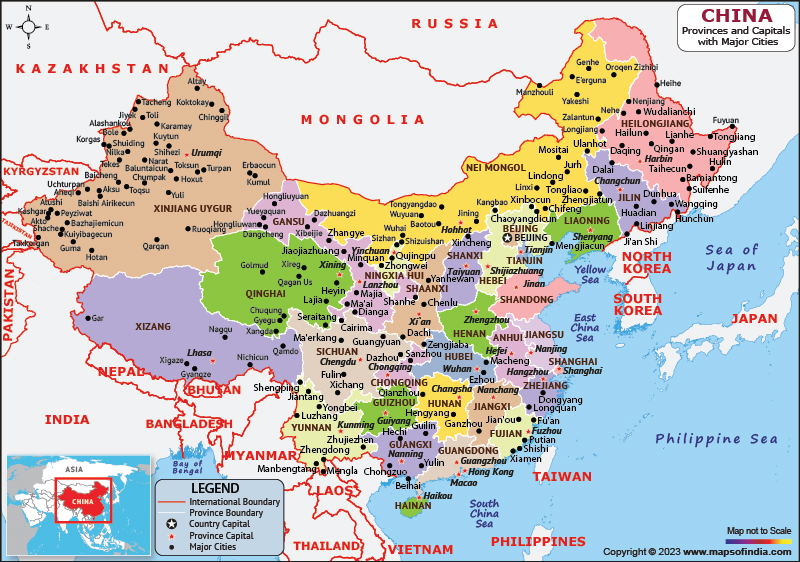China is the world’s most populous country in East Asia. The capital of the country is Beijing, and the largest and most populous city is Shanghai. A unitary Marxist-Leninist one-party socialist republic governs China presently. China stands as a founder member of several multilateral and regional cooperation organizations and is a permanent member of the United Nations Security Council. China is the second-largest economy by nominal GDP, the largest economy by GDP at purchasing power parity, and the second-wealthiest country.
History:
The origins of the modern Chinese can be traced back to the cradle of civilization in the fertile Yellow River basin of the North China Plain. In the 21st century BC, the semi-legendary Xia Dynasty and the stalwart Shang and Zhou dynasties developed bureaucratic political systems to serve hereditary monarchies or dynasties.
The first Chinese empire was formed in the third century BCE, which was the short-lived Qin dynasty. It was followed by the more stable Han dynasty in which the Chinese empire became one of the world’s foremost economic powers. After the fall of the Han Dynasty, after centuries of division, the Sui and Tang dynasties reunited the empire. The multinational Tang Dynasty welcomed foreign trade and culture along the Silk Road and adapted Buddhism to China's needs.
The turbulent period of political and social turmoil in China, known as the Cultural Revolution, from 1966 to 1976 resulted in the economic and educational decline, and millions of people were purged, persecuted or "politically murdered" depending on their political categories. Since then, the Chinese government has implemented a series of political and economic reforms that have significantly improved living standards and extended life expectancy in China since 1978, denouncing some of the earlier Maoist policies.
Culture:
Chinese culture has long emphasized a deep sense of history and a largely introverted national perspective. The literary emphasis of the exam has influenced the general perception of China's cultural sophistication, such as the belief that calligraphy, poetry, and painting are higher art forms than dance or drama.
With the rise of Chinese nationalism and the end of the Cultural Revolution, various forms of traditional Chinese art, literature, music, film, fashion, and architecture were revived, with folk and popular arts, in particular, arousing national and even global interest.
Language:
Mandarin is the official language of China, but it has as many as 292 living languages, which are mostly spoken and belong to the Sinitic branch of the Sino-Tibetan family, the Tibeto-Burman branch, and other ethnic minority languages in southwest China. Altaic languages are spoken by people across northwestern and north-eastern China. There are various languages spoken in different areas of China.
Geography:
China has vast and varied landscapes from the Gobi Desert and Taklamakan Desert in the dry north to subtropical forests in the humid south. The Tian Shan, Himalaya, Pamir and Karakoram Mountain ranges separate China from much of Central and South Asia. China's landscape varies considerably across vast territories. To the east, vast and densely populated alluvial plains stretch along the coasts of the Yellow and East China Seas, and to the north, vast grasslands stretch along the edge of the Inner Mongolia Plateau. Southern China is dominated by hills and low mountain ranges, while the east-central region is dominated by the delta of China's two largest rivers, the Yellow and Yangtze rivers.
| Official name | People's Republic of China |
| Capital | Beijing |
| Population | 141.24 crores (2021) |
| Area | 9.597 million sq km |
| Currency | Chinese Yuan |
| Religion | Buddhism, Islam, Taoism and Christian |
| Language | Mandarin |
| Major cities | Shanghai, Beijing, Chongqing, Shenzhen |
FAQs
Q.1. Which is the most populous country of China?
Ans. The most populous country of China is Shanghai.
Q.2. What is the currency of China?
Ans. The currency of China is the Chinese Yuan.
Last Updated on: May 16, 2023
